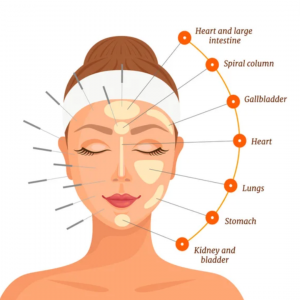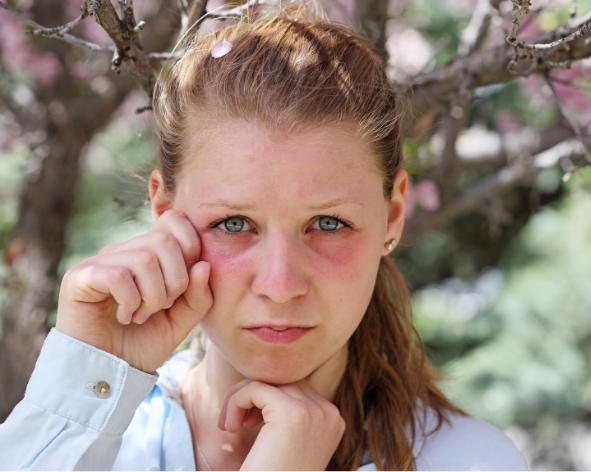How Facial Expressions Impact Health
Facial expressions exert a profound influence on both mental and physical health. Beyond their role in social communication, facial expressions play a key part in shaping emotions and overall well-being. Positive expressions, such as smiling or laughter, can trigger the release of endorphins, promoting feelings of happiness and reducing stress. Conversely, chronic negative expressions may contribute to facial tension, potentially impacting physical health, such as headaches or jaw discomfort. Socially, facial expressions foster connections and contribute to a positive environment. The mind-body connection is evident as facial expressions can influence mood, and practices like laughter yoga leverage this connection for stress reduction. Additionally, the perception of others’ facial expressions can affect our emotional states. Recognizing and consciously utilizing positive facial expressions can be a powerful tool in promoting mental and physical health.
How do Facial Expressions Impact Health
1. Emotional Well-being: Positive facial expressions, such as smiling or laughing, stimulate the release of endorphins, enhancing mood and reducing stress. Conversely, chronic negative expressions may contribute to emotional distress.
2. Stress Reduction: Positive facial expressions activate the body’s relaxation response, lowering cortisol levels and mitigating stress. This, in turn, positively affects cardiovascular health and immune function.
3. Social Connection: Facial expressions are integral to social communication. Positive expressions foster social bonds, contribute to a supportive social environment, and enhance overall mental well-being.
4. Physical Health: Chronic negative facial expressions can contribute to facial tension, potentially leading to headaches or temporomandibular joint (TMJ) issues. Positive expressions may alleviate such physical manifestations.
Facial Expressions as Signals of Health
Facial expressions serve as useful signals of health, conveying valuable information about an individual’s physical and emotional well-being. Positive facial expressions, such as a genuine smile, are often indicative of good mental health, positive emotions, and overall contentment. On the contrary, chronic negative expressions, like frowning, may suggest stress, discomfort, or underlying emotional issues.
The skin’s texture and color, as expressed through facial features, can provide insights into physical health. A healthy complexion with a natural glow is often associated with proper hydration, nutrition, and overall well-being. Conversely, signs of fatigue, paleness, or skin abnormalities may signal underlying health concerns.
Facial expressions can also reveal specific health-related conditions. For instance, puffy or discolored under-eye areas may indicate a lack of sleep or allergies, while excessive stress might manifest as tension lines or furrowed brows.
Furthermore, expressing a range of facial emotions signifies emotional and mental flexibility, contributing to psychological well-being. Associating a lack of facial expressiveness with certain neurological or emotional conditions is possible.
In social contexts, individuals often rely on facial expressions to gauge the health and emotional state of others. Positive expressions contribute to a more positive social environment, fostering connections and support networks. Attuning to facial expressions enables empathetic responses and effective communication, promoting overall well-being within communities. In essence, facial expressions serve as dynamic indicators of both physical and emotional health, offering a window into the complex interplay between mind and body.
How TCM Views The Face?
 In Traditional Chinese Medicine (TCM), facial expressions are integral to face reading, a diagnostic practice that interprets facial features to assess an individual’s health. The TCM face map provides insights into the internal state of organs and overall well-being based on the appearance of different facial zones.
In Traditional Chinese Medicine (TCM), facial expressions are integral to face reading, a diagnostic practice that interprets facial features to assess an individual’s health. The TCM face map provides insights into the internal state of organs and overall well-being based on the appearance of different facial zones.
1. Forehead: TCM associates the forehead with the digestive system. Furrowed brows or tension lines may indicate digestive issues or stress impacting the stomach and intestines.
2. Eyes: The eyes are linked to the liver in TCM. Dark circles or redness might signal liver imbalances or stress. Puffy eyes could be associated with kidney issues.
3. Nose: The nose is connected to the heart and circulatory system. Changes in color or appearance may suggest cardiovascular health and issues like redness could indicate heart-related stress.
4. Cheeks: Cheeks are associated with the lungs and respiratory system. Pale cheeks might indicate lung weakness, while redness may suggest inflammation or heat.
5. Mouth and Lips: TCM connects the mouth and lips with the stomach and spleen. Dry or cracked lips could indicate digestive issues, and changes in lip color may reflect blood circulation.
6. Chin and Jaw: The chin and jaw are linked to the reproductive system. Acne or hormonal changes in this area may signal imbalances in the endocrine system.
7. Overall Facial Complexion: TCM practitioners assess the overall complexion for signs of qi (energy) and blood circulation. A healthy, vibrant complexion is associated with good energy flow and balanced organ function.
Understanding facial expressions within the context of TCM face reading allows practitioners to identify potential imbalances in specific organs or systems. This holistic approach considers the interconnectedness of the body, emotions, and external factors. Integrating TCM face map reading with conventional facial expression analysis achieves a more comprehensive understanding of an individual’s health. This integration facilitates personalized treatment plans addressing both physical and emotional well-being.
Benefits of Face Mapping
Face mapping, a practice rooted in various traditional healing systems such as Traditional Chinese Medicine (TCM) and Ayurveda, involves analyzing facial features to gain insights into an individual’s health. Here are some potential benefits of face mapping:
1. Holistic Health Assessment: Face mapping provides a holistic approach to health assessment, considering the interconnectedness of various organs and systems within the body.
2. Early Detection of Imbalances: By identifying changes in facial features, practitioners may detect imbalances or potential health issues at an early stage, allowing for proactive intervention.
3. Enhanced Traditional Diagnostic Practices: Face mapping complements traditional diagnostic practices in systems like TCM and Ayurveda, providing additional layers of information for a more comprehensive assessment.
4. Natural Beauty and Skin Health: Face mapping guides skincare routines by identifying areas linked to specific organs or systems. Addressing underlying health issues may contribute to improved skin health and natural beauty.
If you’re interested in talking to our professional team at Happipuncture, visit Happipuncture or contact us at 09-2182992.
We help New Zealanders improve their health, and be young in natural, holistic ways. We enjoy helping you feel better and be better both physically and mentally. Here are the 20 Best New Zealand Acupuncture Blogs you should follow in 2024.
Embrace the joys of staying healthy. Let’s make it happen together at Happipuncture.




